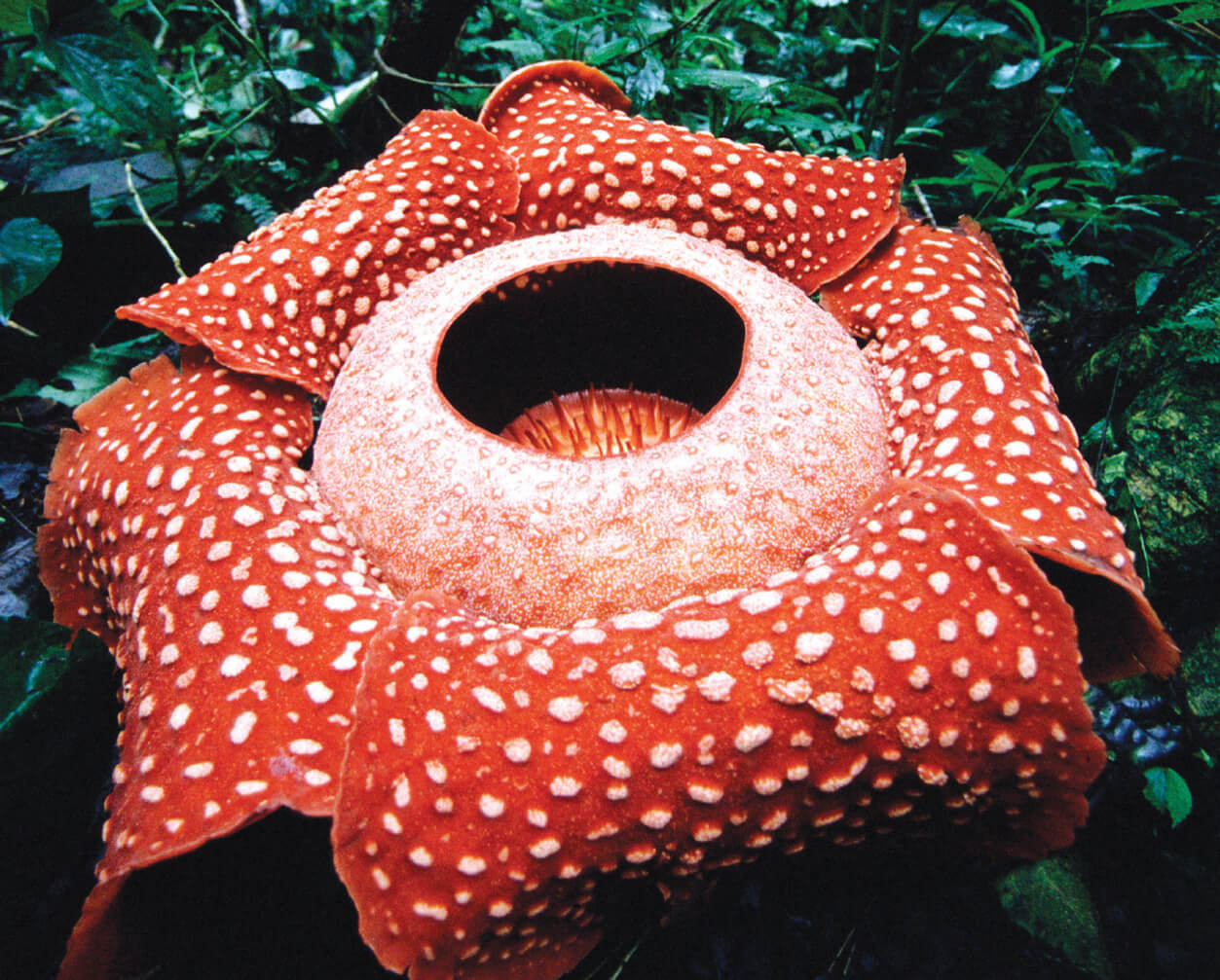Noble Rot
Joseph Arnold and the discovery of the corpse flower
Elaine Ayers

You smell Rafflesia arnoldii before you see it. Described variously as the scent of “decaying animal matter,” “tainted beef,” and “death,” the fetid thickness of air hits you in waves, warning you that something is deeply wrong: that maybe you’re about to stumble upon a body. Next you might see the carrion flies “always found hovering over these strange flowers,” attracted by the plant’s “objectionable effluvium,” laying their eggs in its massive nectary and tracking out seeds on their tiny feet.[1] Finally, if you’re lucky enough, you see the flower itself: a massive, five-petaled parasite growing on an unassuming vine, its dark-red body speckled with pustular protuberances, a gaping cavity revealing its sex organs to hopeful pollinators. It looks like a twisted cartoon flower, drawn too large to support its own weight. There is something disturbingly animalistic about this plant, only heightened by its corpse-like fragrance.
To be clear, this corpse flower isn’t the same as the giant, phallic floral species that sparked botanical conspiracy theories in 2016 when, after lying dormant for nearly a decade, a number of its specimens bloomed in botanical gardens across the world in a seemingly coordinated attack on our senses.[2] Completely unrelated to Amorphophallus titanum (also known as the “giant misshapen penis” of the vegetable world), Rafflesia arnoldii is part of a genus most of whose species have also developed the not entirely uncommon ability to mimic the smell of rotting flesh to attract carrion pollinators—a kind of evolutionary olfactory symbiosis.[3] Indeed, many plants emit fragrances that mimic animal pheromones, drawing insects in with sickly sweet, musky perfumes suggesting both sexual availability and potential food sources, tricking insects into picking up their pollen to unwittingly distribute elsewhere. Some plants, like the carnivorous pitcher plants that inhabit the same Southeast Asian forests as corpse flowers, trap insects inside their cavernous mouths, slowly dissolving them in acid to extract necessary nutrients for survival.
Rafflesia arnoldii, though, is the king of flora. Exceedingly rare, and lacking most of the traits that define plant life—chlorophyll, roots, leaves—this is the largest flower in the world, and arguably the strangest. Discovered in the middle of the Sumatran rainforest in the early nineteenth century, Rafflesia arnoldii has defied collection, cultivation, and even, in some respects, classification, maintaining its status as one of the most unknowable creatures on earth. While chemists have recently identified the compounds that produce its undeniably corpse-like stench, Rafflesia’s scent seems bigger than the sum of its parts, formed as much by the flower’s uncanny appearance, its fleeting rarity, and the lack of any botanical referents for describing its scent as by any combination of phenols and trimethylamines.